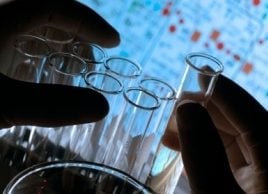Endometriosis
With endometriosis, fragments of the uterine lining (endometrium) are deposited elsewhere in the body ‘ typically in or on the Fallopian tubes, on the ovaries, behind the uterus, or on the bowel, bladder or pelvic wall, but sometimes in abdominal scars or even the lungs.

Source: Adapted from Family Medical Adviser, Reader’s Digest
What is endometriosis?
With endometriosis, fragments of the uterine lining (endometrium) are deposited elsewhere in the body – typically in or on the Fallopian tubes, on the ovaries, behind the uterus, or on the bowel, bladder or pelvic wall, but sometimes in abdominal scars or even the lungs.
These fragments respond to monthly hormonal changes, growing and bleeding during each cycle. But, unlike the lining of the uterus, they have no means of escape, and this leads to inflammation and a buildup of scar tissue.
Who is at risk for endometriosis?
Endometriosis can begin at any time from the onset of menstruation to the menopause. You are more at risk if you have a family history, a menstrual cycle shorter than 28 days and if your periods last more than a week. The main symptom is pelvic pain. Other endometriosis symptoms include bloating, fatigue, painful periods, painful sex, painful bowel movements, constipation, painful and frequent urination or blood in the urine during periods, and infertility.
Treatment for endometriosis
There is no cure for endometriosis, but it usually disappears at menopause. Treatment is aimed at relieving pain, shrinking or slowing the development of endometrial deposits, preserving or restoring fertility, and preventing or delaying recurrence. It may include hormonal drugs designed to stop ovulation and allow endometrial deposits to shrink; the combined oral contraceptive pill; and the Mirena, a T-shaped device made of light plastic that releases small doses of a progestogen.
Sometimes endometrial deposits are surgically removed or vaporized with a laser. In severe cases hysterectomy may be necessary.
Questions for Your Doctor
Some complications from endometriosis may occur. Speak to your doctor for more about the following:
- Endometriosis may stick organs together with strands of tissue, called ‘adhesions’.
- ‘Chocolate cysts’ filled with dark blood may form.
- Fragments of the endometrium may block the Fallopian tubes, making it difficult to become pregnant.
Related Procedures for Endometriosis
Diagnosis for endometriosis is confirmed by laparoscopy.
Alternative Therapies for Endometriosis
Relaxation and stress management techniques may help to reduce stress and fatigue due to endometriosis. Acupuncture, aromatherapy, herbal treatments, homeopathy, reflexology, naturopathy and osteopathy may also help.




